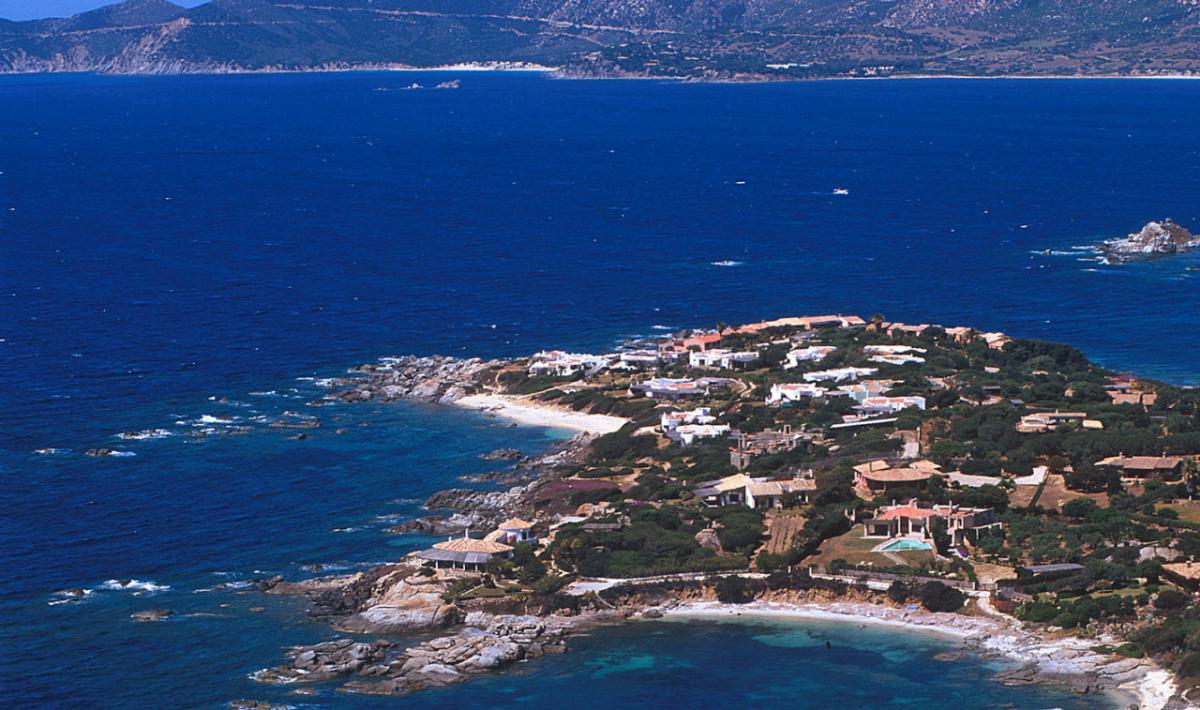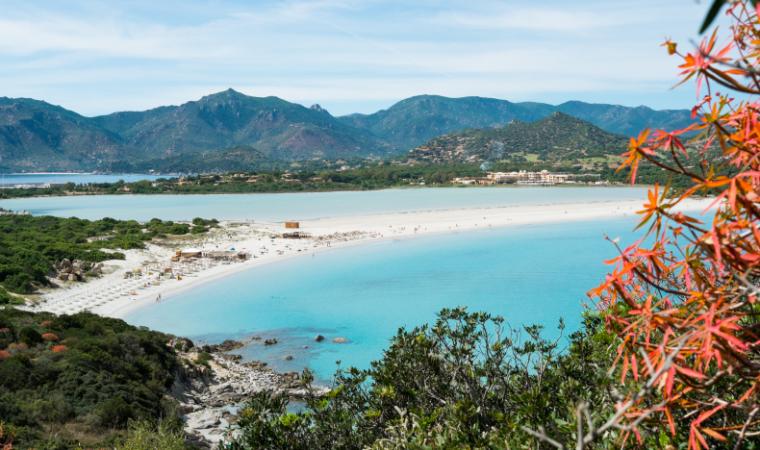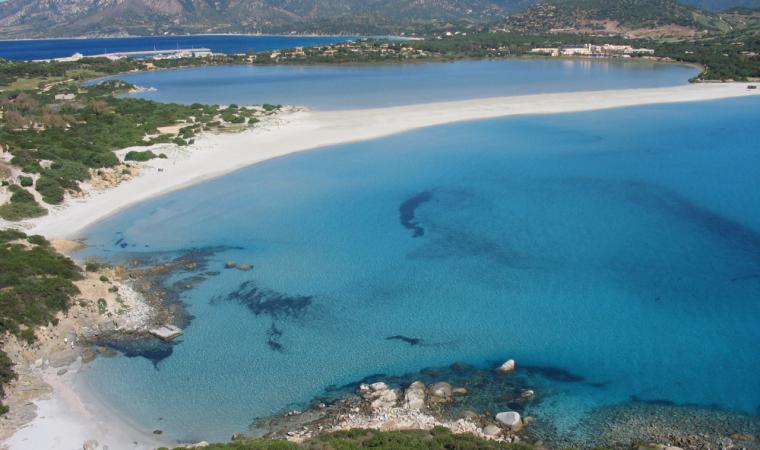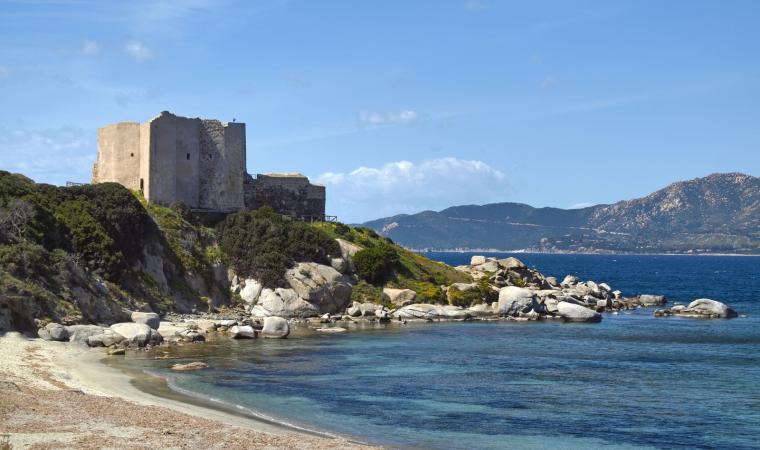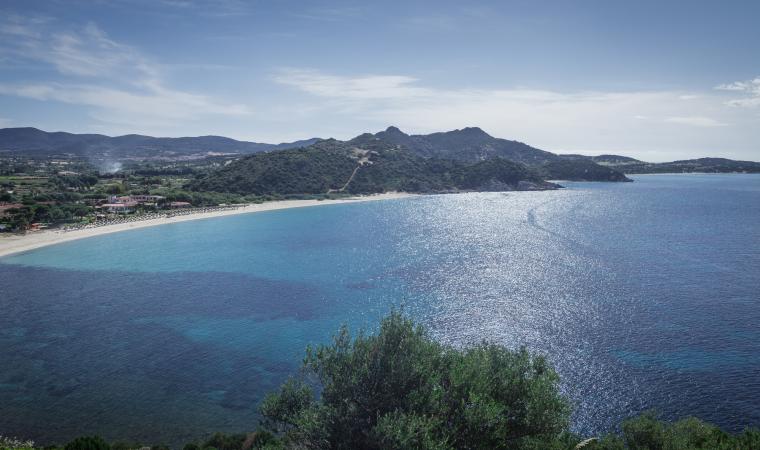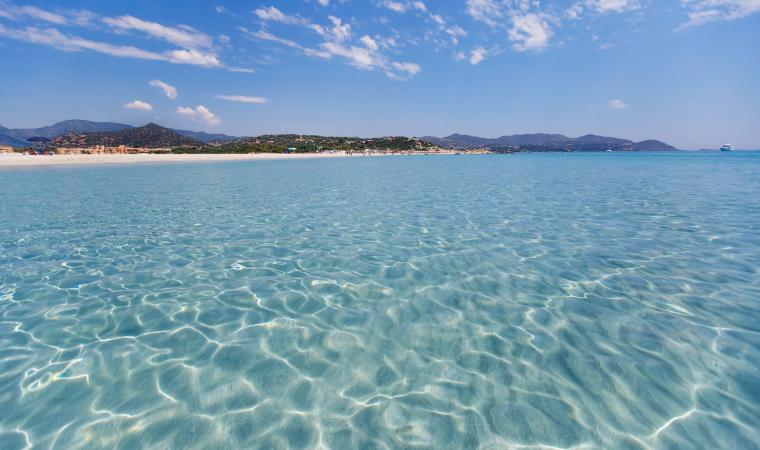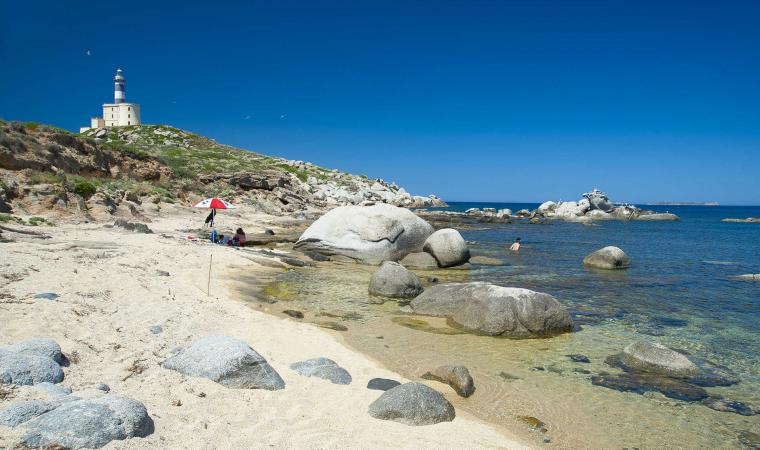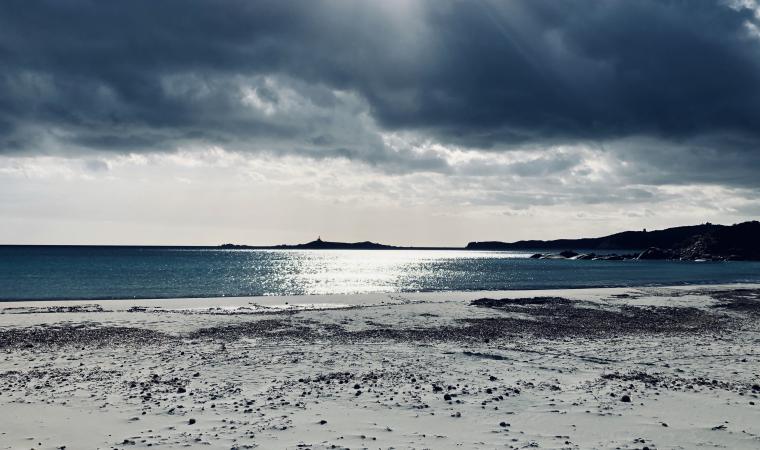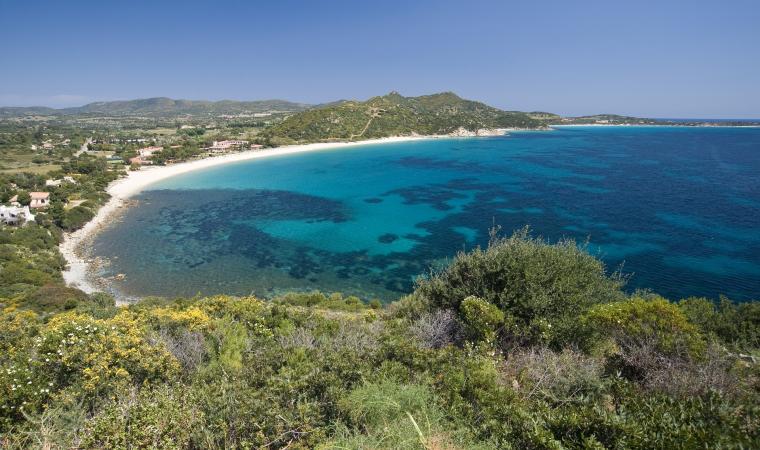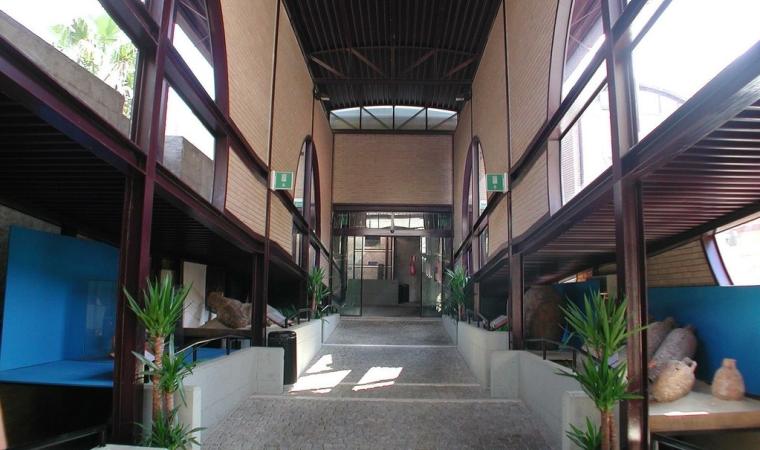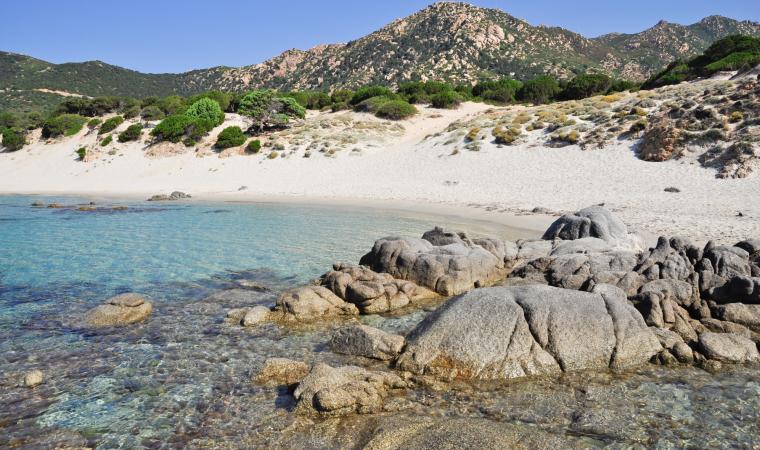A joy for the soul, and a fantastic place to wait for the sunset, relaxing lying on the sand and swimming in crystal clear waters. The bay of Cala Caterina is set in the south slope of the promontory of Capo Carbonara, at the extreme south-eastern tip of the island, and is formed by several inlets, including two main ones. One is very small, uncrowded, and surrounded by granite rocks. The beach is almost closed on itself, with a white and fine sandy bottom that is lapped by a sea of a thousand reflections, between emerald green and blue, that contributes to the variety of colours of the landscape. Well sheltered from the Mistral wind, it is bordered on one side by a cliff, and on the other it gives way to the smooth rocks. The bottom is shallow and sandy, full of fish that will crowd at your feet. The other beach is a little more exposed to winds, with similar but more extensive characteristics. Here the sandy bottom becomes rocky after a few metres, ideal for snorkelling.
On the bank of the whole bay, the erosion of the granite has created a pinkish sand that makes the water's shore shine with intense colours. Behind it, the outcropping rocks complete the picture postcard scene, covered by succulents with various shades of pink and purple flowers, forming a breath-taking backdrop. Further inland is the residential complex of the village of Santa Caterina, adorned and scented by essences of Mediterranean scrub.
You can reach Cala Caterina by car along the road to Riso beach, past the marina and the Old Fortress: after parking, there is a long walk on foot. The cove is one of the infinite 'protected' jewels of the marine area of Capo Carbonara, in the territory of Villasimius; a dream tourist resort, and a pearl of southern Sardinia. The coast is formed by a 'crown' of beaches, interspersed with cliffs. Starting from Capo Boi, the southernmost tip of the protected marine area, along the panoramic road, you'll find the beaches of Porto sa Ruxi, Campus and Campulongu, all characterised by their clear blue sea and dunes of fine white sand. Near the town center, there is the very particular "rice" beach, with its characteristic "grains". On the eastern side, prepare to discover some breath-taking sights, starting with Porto Giunco, backed by the Notteri pond, a habitat of the pink flamingo. Going north, you will find the beaches of Simius and Traias, and further on Rio Trottu and Manunzas, which accompany the wonderful Punta Molentis. From Capo Boi to the island of Serpentara, passing through the island of Cavoli and through various shallows, the marine area offers underwater spectacles including wrecks of every era lying on the bottom.

